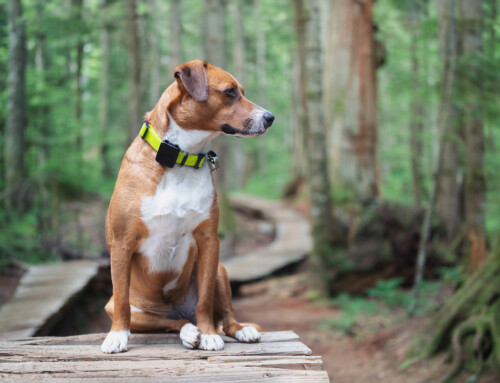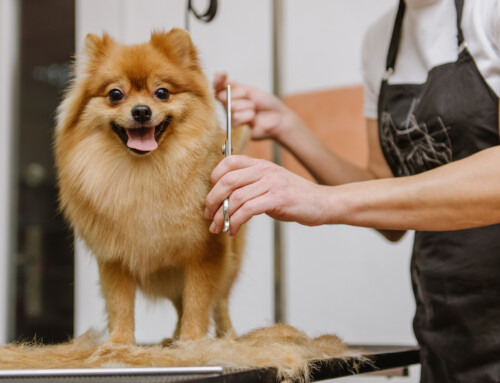With the warm weather and extra hours of daylight, summer is a great time to spend some quality time outdoors with your pet. However, summer also comes with a unique set of risks. As pets spend more time outside, heat, sun exposure, and other outdoor hazards become risk factors for your furry friend. Wouldn’t it be nice to have some helpful summer pet tips to keep your fur baby safe?
In this article, we’ll talk about some of the most common dangers that pets face during the summer months and what you can do to keep them safe.
1. Heat Stroke
This is one of the summer pet tips that can save your pet’s life. Dogs and cats have no sweat glands, therefore they cannot regulate their body temperatures as easily as humans. They rely on us to make sure they are safe and comfortable in extreme weather.
Heat stroke is the most critical weather-related injury that can affect your pet. This condition occurs when your pet’s temperature regulation system breaks down, causing a dangerous rise in body temperature.
Signs of heat stroke in a pet include:
- heavy panting
- lethargy
- vomiting
- rapid heartbeat
- disorientated or excitable behavior.
If you see these signs, get your pet indoors and call the vet immediately. If left untreated, heat stroke can lead to a fatal condition called hyperthermia, where the body temperature rises so quickly that it results in organ failure and death.
The best way to prevent heat stroke is to limit your pet’s exposure to the sun during the hottest parts of the day, keep shady areas available for them to escape the heat, and make sure they have access to plenty of clean water.
2. Sunburns and Hot Pavement
One of the most common pet injuries that occur during the summer months is sunburn. Dogs and cats who spend time outside are at risk from sunburn, as well as other harmful effects of ultraviolet rays such as skin cancer. Any animal can suffer from sunburn, but pets who have short or shaved fur are especially vulnerable.
The most sensitive areas for pets are their ears, nose, lips, groin, and the undersides of their belly. While sunscreen can help, be sure to double-check that it doesn’t contain zinc oxide, which is highly toxic to animals.
You’re better off preventing your pet from getting sunburned by limiting their outdoor time during the hours when the sun’s rays are strongest. Create a shady spot for them to rest in during these peak hours, or take them to an indoor play area to avoid the rays.
The sun can also cause burns to your animals indirectly. As the temperature rises, concrete and black top can become incredibly hot. The heat from the pavement can burn a pet’s delicate paws if they’re out walking in the midday sun.
Try to schedule walks with your pet earlier in the morning or later in the evening when temperatures are lower. You also might even want to choose a grass or dirt path on days when the temperature soars.
3. Insect Bites and Stings
Most bugs are more active during the warmer months, including fleas, mosquitos, bees, and ticks. These pests are a nuisance for humans, but they can also be a big risk for your furry friends.
Here are a few common insects that you need to watch out for when you bring your pets outdoors:
- Ticks– Ticks are blood-sucking parasites that can cause serious health issues in both humans and animals, including a fatal disease called Lyme disease. Ticks can be found in wooded areas, along hiking trails, and in grassy areas. If you see ticks on your pet, you should carefully remove them and throw them away.
- Mosquitos– In addition to causing itchy welts, mosquitos can also transmit heartworm, a highly dangerous parasite. Mosquitos are drawn to grassy areas, especially near standing water such as puddles and ponds.
- Fleas– Fleas not only make your pet miserably itchy, but they can also multiply quickly and cause terrible infestations that can make your pet very sick. Fleas can be found in any grassy areas or they can be picked up from other animals.
- Stinging Insects– Some insects, like bees and wasps, may sting pets in defense when they’re disturbed. Take extra precautions during the summer months when outdoor activities are more common.
The best way to protect your pet from the harmful effects of fleas and ticks is to give them a monthly preventative chew. Your vet will be able to recommend the best type to suit your pet’s age and weight.
Some types of flea and tick collars will also deter mosquitos. Have your pet wear the collar whenever they go outside.
4. Summer Pet Tips: Fireworks

Summer brings lots of outdoor celebrations, many of which feature fireworks. While some pets may enjoy the sights and sounds of fireworks, many are frightened by them.
If your pet is terrified by fireworks, there are some steps you can take to help them cope:
- Set up a safe space for your pet- Create a space where your pet feels safe, such as a crate or gated area. Let your pet retreat there until the noise is over.
- Mask the noise- Try playing the radio or television during the fireworks to help cover the scary noises outside. Classical music may even be soothing to your pet.
- Calming gear- Talk to your vet about special treats, vests, or other gear that can help reduce anxiety in dogs and cats.
Most importantly, make sure your pet is microchipped and that their ID tags are up to date. Even if your pet has never run away before, fireworks can spook them enough to make them run. Proper IDs can make it easier to get them home again safely.
5. Swimming Pools
Taking your pet swimming is a great way to provide exercise and keep them cool during the summer months. However, before you jump in with your pet, make sure you observe these summer pet tips:
- Do a swim test- Most people assume that all animals can swim naturally, but this isn’t always the case. Inexperienced swimmers and certain breeds may struggle to stay afloat so stay within reach until you are certain of their skills.
- Don’t let them drink the pool water- Of course, your pet will ingest a little bit of pool water while they play, but be sure to offer plenty of fresh drinking water so they don’t overindulge in chlorinated pool water.
- Avoid pool covers- Solar pool covers are a great way to keep your pool at a comfortable temperature but they can be very dangerous for over-enthusiastic pets. Animals may fall or jump in and become tangled and disoriented by the cover.
- Never leave them unattended- No matter how comfortable your pet may be in the pool, accidents can happen. Your pet may fall in unexpectedly or become tired before they can get back to the steps. Watch your furbaby as carefully as you would watch a human child when playing by the pool.
6. Hot Vehicles
It’s fun to take your pet along when you have to run a quick errand. You love the company and they love the excitement of a car ride. But as the temperatures rise, it’s vital to never leave your pet alone in a hot car even for a few minutes.
Whether you get caught up in a long line at the store or you run into that friend that loves to chat, it’s easy to lose track of time- but even a few extra minutes in a hot car can spell disaster for your pet.
Even though the outside temperature may not feel that hot, the inside of a car can quickly heat up to dangerous temperatures. In fact, it only takes about 30 minutes for it to reach 104 degrees Fahrenheit.
Bring along someone to wait in an air-conditioned car with your pet or bring them into pet-friendly buildings with you. If you aren’t able to do those things, it’s probably best to leave your pet at home until the weather is mild again.
Summer Pet Tips: Main Street Vet Can Help You Keep Your Pet Safe This Summer
We hope that you found these summer pet tips helpful. Summer hazards don’t have to ruin all the fun you have planned with your pet this season. It’s possible to have fun and do it safely!
Do you have any questions or concerns about keeping your pet safe and comfortable this summer? We can help! Contact Main Street Vet today.








